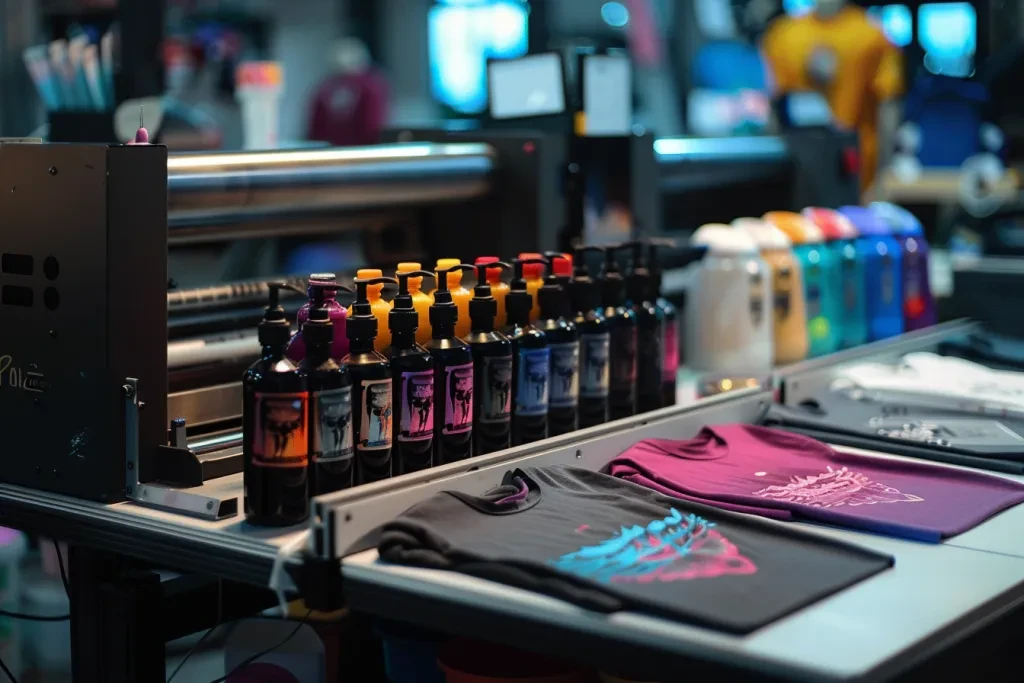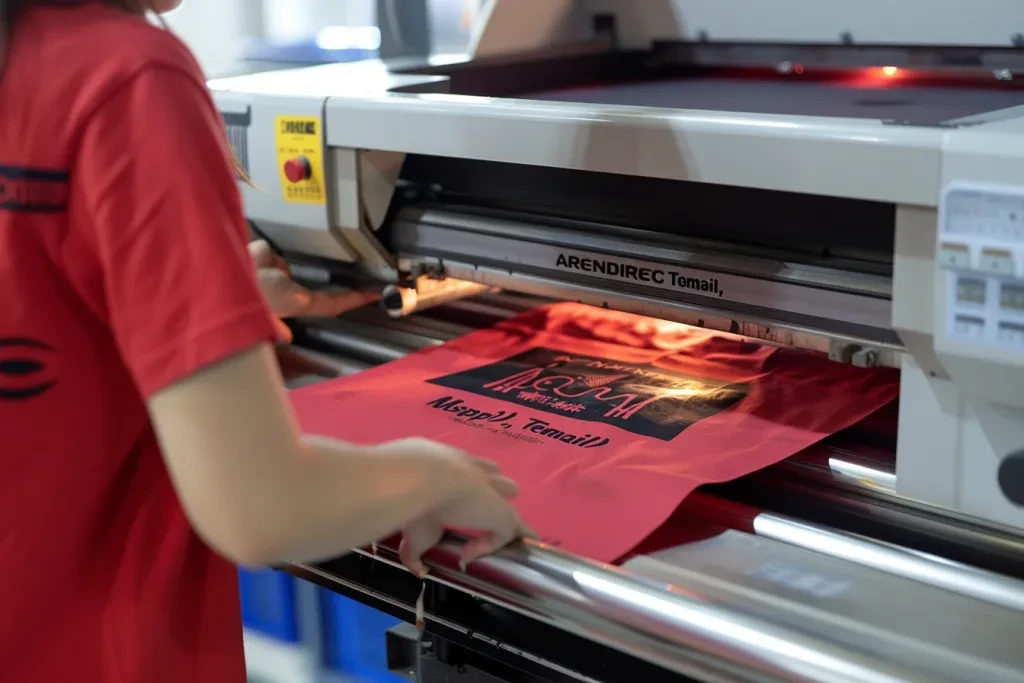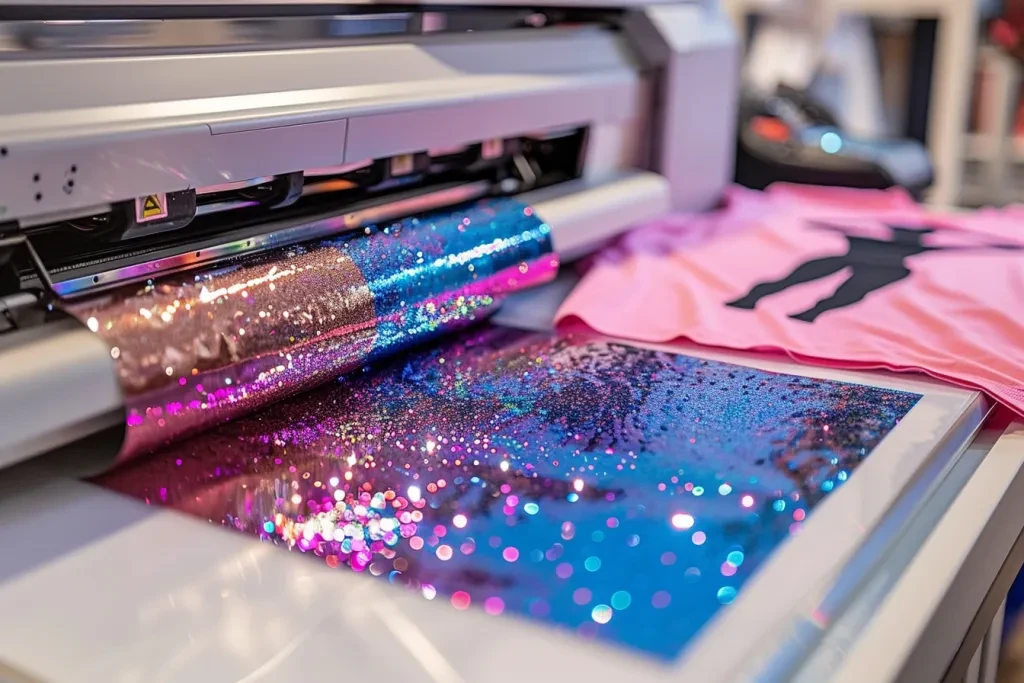The shirt printer market has seen exponential growth recently, with the demand for customized apparel skyrocketing. In 2025, the market continues to evolve with advancements in digital printing technologies. This article provides a detailed analysis of key factors to consider when selecting a shirt printer, making it an indispensable resource for wholesalers, retailers, and purchasing professionals.
Table of Contents:
– Shirt Printer Market Overview
– Detailed Introduction and Analysis of Shirt Printer Market
– Key Factors When Selecting a Shirt Printer
– Regulatory Compliance and Industry Standards
– Future-Proofing Your Investment
– Summary
Shirt Printer Market Overview

The shirt printer market has seen significant growth recently, driven by increasing demand for customized apparel and advancements in printing technology. In 2023, the global custom t-shirt printing market was valued at $5.6 billion and is projected to reach $10.1 billion by 2030, growing at a compound annual growth rate (CAGR) of 8.9%. This growth is fueled by the rising popularity of personalized clothing, the expansion of e-commerce platforms, and the integration of digital printing technologies.
Key regional markets such as the United States and China are significant contributors to this growth. The U.S. market alone was estimated at $1.5 billion in 2023, while China is expected to grow at an impressive CAGR of 13.1%, reaching $2.6 billion by 2030. Other regions, including Japan, Canada, Germany, and the Asia-Pacific, are also witnessing robust growth, driven by increasing consumer demand for unique and personalized products.
The market is segmented by printing techniques, including screen printing, digital printing, and plot printing. Screen printing remains a dominant technique, expected to reach $5 billion by 2030 with a CAGR of 8.4%. Digital printing is also gaining traction, projected to grow at a CAGR of 9.8% over the next seven years. Advancements in printing technologies, such as direct-to-garment (DTG) printing, which offers high-resolution, full-color designs with minimal setup costs, are further supporting the market’s expansion.
Detailed Introduction and Analysis of Shirt Printer Market

The shirt printer market is characterized by key performance benchmarks, including print quality, production speed, and cost-efficiency. Digital printing technologies, particularly DTG, have revolutionized the industry by providing high-resolution prints directly onto fabric, enabling intricate designs and rapid production. This technology is ideal for small batch orders and complex designs, meeting the growing demand for personalized apparel.
Market share dynamics reveal that major players such as CafePress Inc., CustomInk LLC, and Printful Inc. hold significant portions of the market, leveraging their advanced printing capabilities and extensive distribution networks. These companies are continuously innovating to enhance their product offerings and improve customer experience. For instance, Roland Corporation’s Texart XT-640S-DTG t-shirt printer utilizes CMYK and high-density White sublimation inks, catering to diverse printing needs with speed and accuracy.
Economic influences, such as increasing disposable income and the growth of the e-commerce sector, are driving market expansion. The rise of online printing platforms has made it easier for consumers to design and order custom t-shirts, contributing to the market’s growth. Additionally, the trend of corporate branding and promotional merchandise is boosting demand for custom t-shirts among businesses.
Consumer behavior is shifting towards personalized and sustainable products. Custom t-shirts are popular for personal expression, special events, and gifting, while businesses use them for brand promotion and employee uniforms. The adoption of eco-friendly inks and materials, such as organic cotton and recycled polyester, is becoming a significant trend, aligning with the growing emphasis on sustainability.
Distribution channel preferences are evolving, with online channels gaining prominence due to their convenience and wider reach. E-commerce platforms allow businesses and consumers to easily access custom t-shirt printing services, leading to increased market penetration. Offline channels, such as retail stores and print shops, continue to play a role, particularly for bulk orders and local businesses.
Recent innovations in the shirt printer market include the use of augmented reality (AR) for virtual try-ons, enabling customers to visualize designs before printing. This technology enhances the shopping experience and reduces return rates. Additionally, advancements in digital printing technologies, such as the use of eco-friendly inks and high-speed printers, are improving print quality and reducing production costs.
Product lifecycle stages in the shirt printer market vary. Mature products like screen printing are widely adopted for large orders, while newer technologies like DTG printing are gaining traction for small batch and personalized orders. The market is also witnessing the rise of on-demand printing services, offering quick turnaround times and reducing inventory costs.
Digitalization is playing a crucial role in the shirt printer market, with online design tools and e-commerce integration streamlining the ordering process. AI-driven design tools are enhancing creativity by suggesting design elements based on user preferences. These digital advancements are making custom t-shirt printing more accessible and appealing to a broader audience.
Social trends, such as the popularity of pop culture and fandom merchandise, are driving demand for custom t-shirts. Consumers are increasingly seeking unique designs that reflect their interests and personalities. Brands are capitalizing on these trends by offering limited-edition merchandise and collaborating with influencers to boost brand visibility.
Customer pain points in the shirt printer market include issues related to print quality, delivery times, and cost. Companies are addressing these concerns by investing in advanced printing technologies, optimizing supply chains, and offering competitive pricing. Ensuring high-quality prints and timely deliveries are crucial for maintaining customer satisfaction and loyalty.
Brand positioning strategies in the shirt printer market involve emphasizing quality, customization, and sustainability. Companies are differentiating themselves by offering unique design options, high-quality prints, and eco-friendly materials. Niche markets, such as sports teams, corporate branding, and event merchandise, are being targeted to drive growth and profitability.
Key Factors When Selecting a Shirt Printer

Types of Shirt Printers
When selecting a shirt printer, it’s crucial to understand the different types available to make an informed decision. Each technology has unique advantages and limitations.
Screen printing involves creating a stencil (or screen) and using it to apply layers of ink on the printing surface. It is ideal for bulk printing due to its cost-efficiency at scale. However, it can be labor-intensive and less suitable for intricate designs or small runs.
Direct-to-Garment (DTG) printing uses inkjet technology to print directly onto the fabric. It offers high detail and is perfect for small batches or custom designs. The initial investment can be higher, but it provides flexibility and speed for on-demand printing.
Sublimation printing involves turning solid dye into gas without passing through a liquid state. This method is excellent for polyester fabrics and produces vibrant, durable prints. However, it is not suitable for cotton.
Heat transfer printing involves printing a design onto transfer paper and then using heat to transfer the design onto the shirt. It is versatile and can be used on various fabrics, but the prints may not be as durable as those from DTG or screen printing.
Vinyl cutting involves cutting out designs from vinyl sheets and then heat pressing them onto the fabric. This method is best for simple, bold designs and offers good durability. However, it may not be ideal for complex or multi-colored designs.
Performance Specifications
Performance specifications are vital when selecting a shirt printer. These include print resolution, speed, and color capabilities.
Print resolution, measured in dots per inch (dpi), determines the quality and detail of the print. Higher dpi values result in finer, more detailed prints. DTG printers typically offer high resolutions, making them suitable for detailed artwork.
Printing speed is crucial for businesses with high-volume printing needs. Screen printers excel in speed for large runs, while DTG printers are slower but offer flexibility for custom orders. Evaluate your production demands to choose a printer with an appropriate speed.
The ability to print in multiple colors is essential for vibrant and detailed designs. Sublimation and DTG printers offer excellent color reproduction, while screen printing can be limited by the number of screens used. Consider the color needs of your designs when selecting a printer.
The type of fabric and the maximum print area the printer can handle are also important. Ensure the printer can accommodate the materials you plan to use and the size of the designs you intend to print.
Modern printers often come with various connectivity options, such as USB, Ethernet, or wireless capabilities. Ensure the printer you choose is compatible with your existing systems and workflow.
Build Quality and Durability
The build quality and durability of a shirt printer are critical factors that affect its longevity and performance.
Printers built with high-quality materials and robust construction are less likely to break down or require frequent maintenance. Look for printers with metal frames and durable components.
Established brands with a history of producing reliable equipment are generally a safer choice. Research customer reviews and industry feedback to gauge the reliability of different models.
A comprehensive warranty and accessible customer support can save you time and money in the long run. Ensure the manufacturer offers good after-sales support and technical assistance.
Consider the ease of maintenance and availability of spare parts. Printers that are easy to maintain and have readily available parts can reduce downtime and operational costs.
Ensure the printer complies with relevant safety standards and certifications. This not only guarantees safe operation but also reflects the quality and reliability of the machine.
Cost Considerations
Cost is a significant factor when selecting a shirt printer, encompassing both initial investment and ongoing operational costs.
The upfront cost of the printer can vary widely depending on the technology and brand. Screen printers may have lower initial costs compared to DTG printers, but the total cost of ownership should be considered.
The cost of inks, transfer papers, and other consumables can add up over time. DTG and sublimation printers typically have higher consumable costs compared to screen printing.
Energy-efficient printers can reduce operational costs and are better for the environment. Look for models with energy-saving features and certifications.
Regular maintenance and potential repairs can incur additional costs. Choose a printer with a good track record of reliability and reasonable maintenance requirements.
Consider the printer’s ability to generate revenue and its payback period. A higher initial investment in a versatile, high-quality printer can result in better profitability over time.
Latest Technology Features
Staying up-to-date with the latest technology features can enhance your printing capabilities and streamline your workflow.
Automation features such as automatic cleaning, alignment, and ink management can improve efficiency and reduce manual intervention.
Advanced printers come with software that allows for easy design creation, editing, and management. Ensure the printer’s software is user-friendly and integrates well with your existing design tools.
Some modern printers offer remote monitoring and control capabilities, allowing you to manage print jobs and monitor performance from anywhere.
Eco-friendly printers use sustainable materials and processes, reducing environmental impact. Consider printers that offer eco-friendly ink options and energy-efficient operation.
Printers with customizable settings allow you to fine-tune print parameters for different fabrics and designs, ensuring optimal results for each job.
Regulatory Compliance and Industry Standards

Ensuring Compliance with Safety and Quality Standards
Compliance with regulatory standards and industry certifications is essential for ensuring the safety and quality of shirt printing operations.
Shirt printers must adhere to safety standards to protect operators and prevent workplace accidents. Safety features such as emergency stop buttons, protective enclosures, and proper ventilation are crucial for safe operation.
Certifications such as ISO 9001 ensure that printers meet high-quality manufacturing standards. These certifications provide assurance of consistent performance and reliability.
Compliance with environmental regulations, such as the Restriction of Hazardous Substances (RoHS) and Waste Electrical and Electronic Equipment (WEEE) directives, is important for reducing environmental impact. Choose printers that meet these standards to promote sustainability.
Ensure that all inks and consumables used in the printing process come with MSDS documentation, providing information on safe handling, storage, and disposal.
Certain industries may have specific standards for printed apparel. For example, sportswear manufacturers may need to comply with performance standards for durability and moisture-wicking properties. Ensure your printer and materials meet these industry-specific requirements.
Future-Proofing Your Investment

Planning for Future Upgrades and Compatibility
Investing in a shirt printer is a significant decision, and planning for future upgrades and compatibility can ensure long-term success.
Choose printers with a modular design that allows for easy upgrades and component replacements. This flexibility enables you to adapt to new technologies and expand capabilities as needed.
Ensure the printer’s software can be regularly updated to incorporate new features and improvements. Regular updates can enhance performance, security, and compatibility with new design tools and operating systems.
Consider the scalability of the printer. As your business grows, you may need to increase production capacity. Printers that can be easily scaled up or integrated into larger production systems offer greater flexibility.
Ensure the printer is compatible with a wide range of accessories and add-ons, such as additional print heads, drying units, and automation systems. This compatibility allows you to enhance functionality and improve efficiency.
Choose a vendor that offers comprehensive support and training services. Proper training ensures that your team can effectively operate and maintain the printer, while ongoing support helps resolve any issues that may arise.
Summary
In summary, selecting the right shirt printer involves considering various factors such as types of printers, performance specifications, build quality, cost considerations, and the latest technology features. Understanding market trends, ensuring regulatory compliance, and planning for future upgrades are also essential for making an informed decision. By carefully evaluating these factors, you can choose a printer that meets your production needs, ensures high-quality prints, and supports the long-term growth of your business.



